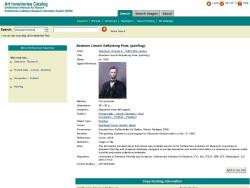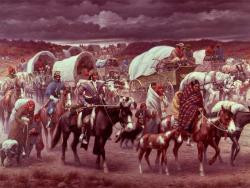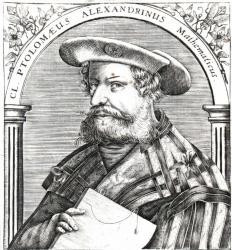Linda Muller
Smithsonian Learning Lab Coordinator
Smithsonian Institution, Heinz History Center
Primary (5 to 8 years old), Elementary (9 to 12 years old), Middle School (13 to 15 years old), Adults, Post-Secondary
Language Arts And English, Science, Social Studies, Arts, Other
Hello, I am one of the Smithsonian Learning Lab Program Coordinators based in Pittsburgh, PA. My professional interests are focused on instructional technology and computer-based learning. I am also fascinated by history as it's presented in primary and secondary resources.
Linda Muller's collections
John Brown: Madman or Martyr?
A collection of materials related to John Brown's raid at Harper's Ferry, VA on October 16, 1859.
Key words: Abolition, John Brown, slavery, Harper's Ferry, Civil war.
 Linda Muller
Linda Muller
10
My Nighstand
A collection of resources, some of which may be on my nightstand, that illustrate me.
 Linda Muller
Linda Muller
6
Cat Collection
This is a fun collection of cats from the Smithsonian Institution along with a photo of my favorite kitty, Lucky.
 Linda Muller
Linda Muller
18
Theodore Roosevelt - "Bully for you!"
A collection of resources on America's 26th President, Theodore Roosevelt.
 Linda Muller
Linda Muller
11
Natural Resources of Pennsylvania
Which resources are naturally found in Pennsylvania? This collection of resources illustrates various natural resources found throughout Pennsylvania.
See if you can identify them and discuss what they are used for.
 Linda Muller
Linda Muller
15
Baseball: America's Favorite Pastime
A collection of resources depicting players, teams, and equipment used for America's favorite pastime.
 Linda Muller
Linda Muller
53
Child Labor in America
What would it have been like to be a child working during the period 1830-1930? Why did children have to go to work during this period in America's history? <br />
Resources in this Collection includes paintings, photographs, text-based sources, and a video depicting children working in a variety of industries across America.
 Linda Muller
Linda Muller
23
Lewis and Clark: an expedition across America
Who were Lewis and Clark? Where did they go? Why did they go? Who sent them? Who did they meet along the way? What dangers did they face? Did anyone help them?
This is a Collection of resources including images, videos, text, online exhibits, and a lesson plan that support Lewis and Clark's expedition across American in the early 1800s.
 Linda Muller
Linda Muller
32
Musical Instruments Across Time
A collection of musical instruments that span a wide variety of origins, cultures, and materials.
Can you guess where each instrument came from, what period in time it's from, who used it, and what family of instruments it belongs to?
 Linda Muller
Linda Muller
40
Famous Faces: A collection of portraits by Irving Penn
Irving Penn was one of the most influential photographers of the 20th Century. Throughout a career that spanned 70 years, Penn captured images in black and white and color across various genres including advertising, fashion, still life, and portraits.
This Collection features portraits Penn took of famous people who built careers in the arts, an article written about Penn in The Smithsonian Magazine (November, 2015), and a link to the Irving Penn Archives at the Art Institute of Chicago where Penn donated the bulk of his collection in 1995.
IMPORTANT NOTE: Resources in the Irving Penn Archives collections at the Art Institute of Chicago include a series of nude photographs which may be inappropriate for minors to view.
 Linda Muller
Linda Muller
24
Spanish-American War
The Spanish-American War was a conflict between the United States and Spain that ended Spanish colonial rule in the Americas and resulted in U.S. acquisitions of territories in the Pacific and Latin America.
The war originated with the Cuban struggle for independence from Spain in 1895. Demand for U.S. intervention increased after the unexplained sinking of the U.S.S. Maine on February 16, 1898 in Havana Harbour.
The U.S. declared war on Spain in April, 1898 and attacked Spain's interests in the Pacific and Cuba. Realizing that she was outclassed by American military power, Spain surrendered from Cuba in July, 1898 - effectively ending the war. Later that year, in December, 1898, Spain signed the Treaty of Paris in which they renounced their claims to Cuba, Puerto Rico, and Guam and transferred sovereignty over the Philippines to the U.S. for $20 million.
Source citation: "Spanish-American War." History.com. A&E Networks. 2016. Web. 6 Jan 2016
 Linda Muller
Linda Muller
17
Trail of Tears
What was the Trail of Tears? What incidents led to the Trail of Tears? Who was removed from their native land? Where did they resettle? What was President Andrew Jackson's opinion on Indian removal? What was John Ross's opinion on Indian removal? What is your opinion on the event?
This Collection was created to be used as an introduction to the "Trail of Tears" event that occurred during the period of Westward Expansion. This Collection contains images of then President Andrew Jackson, John Ross, Chief of the Cherokee nation, and General Winfield Scott. It also includes Jackson's message to Congress, "On Indian Removal", the Treaty of New Echota along with a letter that Chief Ross wrote to the U.S. Congress denouncing the Treaty of New Echota which the government used as legal authority to remove the Cherokee from their native land.
Background Information:
In 1838 and 1839, President Andrew Jackson ordered the relocation of the Cherokee people from their native lands east of the Mississippi River to an area in what is known as present-day Oklahoma.
The Cherokee people called this forced migration the, "Trail of Tears" because of its devastating effects. The Cherokee people suffered hunger, disease, and exhaustion during their journey, resulting in 4,000 deaths out of the 15,000 Cherokees who were forced to relocate.
Source citation: "Trail of Tears." Africans in America. PBS Online. nd. Web. 7 Jan 2016.
 Linda Muller
Linda Muller
11








